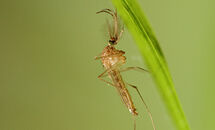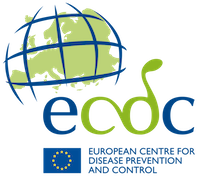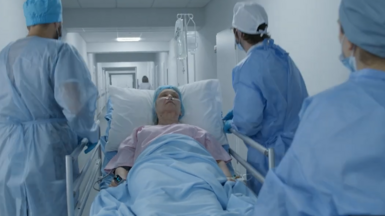|
0
|
- Free area
- No historical circulation of WNV
|
Is there any risk of WNV transmission in this area?
|
Obligatory:
- Human: passive surveillance
- Veterinary: passive surveillance for horses
- SoHO: standard haemovigilance, biovigilance and post-transfusion/transplantation surveillance (not specific for WNV)
|
Health sector
- Increase awareness amongst healthcare professionals about WNV so as it will be considered in the differential diagnosis of travellers returning from affected areas.
- Education of travellers to affected areas on how to reduce the risk.
- Ensure there are laboratory capabilities within the country for diagnosis.
- Ensure SoHo donation authorities have implemented measures to prevent transmission through travellers returning from affected areas (see WNV and blood safety introduction to a preparedness plan).
|
|
1
|
- Predisposed areas where the ecological conditions are suitable for WNV circulation.
- No historical circulation of WNV is known.
- The probability of a human outbreak is unknown but likely to be low.
|
- Is there any risk of WNV transmission in this area in the season?
- Would we detect WNV circulation if it occurred?
|
Obligatory:
- Human: passive surveillance
- Veterinary: passive surveillance for horses;
- SoHO: standard haemovigilance- biovigilance and post-transfusion/transplantation surveillance (not specific for WNV)
Desirable:
- Assess the risk of WNV transmission in the area.
|
Multi-sectoral collaboration and coordination
- Consider drafting WNV preparedness plan
Health sector
- Response as level above
- Ensure there are laboratory capabilities within the country for diagnosis of WNV
Public communication
Vector management response
|
|
2
|
- Imperilled areas where the ecological conditions are suitable for WNV circulation
- Past evidence of WNV circulation
- The probability of a human outbreak is unknown.
|
- To what extent has the virus infected local animal populations?
- What is the prevalence of infection in animal populations?
- Are passive/active surveillance systems (including laboratory diagnostics) in place to be able to identify horse and human infections with WNV?
|
Obligatory:
AND:
- Ensure timely detection and reporting of human cases by passive surveillance;
- Develop and implement a surveillance plan including mosquito, bird and equid surveillance enabling the detection of WNV circulation.
|
Multi-sectoral collaboration and coordination
- Develop a WNV preparedness plan, including surveillance activities and an integrated vector control plan.
- Allocate resources necessary to enable emergency response (i.e. vector control, communication plan).
- Establish close and regular exchange of information between all sectors as part of the WNV preparedness plan.
Health sector
- Response as level above
AND:
- to assure an appropriate level of awareness among health care professionals;
- to define roles and responsibilities, but also training courses, curricula, information and management recommendations;
- availability of national guidelines for clinical management.
Public communication
- Conduct public information campaigns during the mosquito season to strengthen use of personal protection measures against mosquito bites.
Vector management response
- As part of the WNV preparedness plan: consider preparing vector control activities if entomological indicators suggest the need.
- Allocate resources necessary to enable emergency response (i.e. vector control).
- Implement larval control as part of the integrated vector control in the event of there having been WNV circulation in the previous year.
|
|
3a
|
- Imperilled areas
- Current surveillance findings (i.e. mosquito or bird screening) indicating WNV epizootic activity in the area in the second part of the season (i.e. August-September-October)
- The probability of a human outbreak is low.
|
- What is the geographic extension of the area where WNV is circulating?
- What is the seasonal dynamic of WNV circulation?
- What is the real risk for people?
|
Obligatory:
AND:
- Ensure timely detection and reporting of human cases by passive surveillance.
- As part of the surveillance plan: ensure the proper continuation of the surveillance activities.
|
Multi-sectoral collaboration and coordination
- Response as level above
- Health sector
- Response as level above
Public communication
- Consider public information campaigns to support vector control response
Vector management response
AND:
- Implement public education programs focused on risk potential and personal protection, and emphasising residential source reduction.
- Vector control focuses on larval control.
|
|
3b
|
Imperilled areas
- Current surveillance findings (i.e. mosquito or bird screening) indicating WNV epizootic activity in the area, in the first part of the season (May-June-July)
- The probability of a human outbreak is low to moderate.
|
Idem as level above
|
Obligatory:
AND:
- Human: active/enhanced surveillance in the area with confirmed virus circulation.
- Ensure timely reporting of human cases by passive/active surveillance.
- As part of the surveillance plan: increase the mosquito and bird surveillance activities.
|
Multi-sectoral collaboration and coordination
Health sector
Public communication
- Response as level above
- AND:
- Implement public information on personal protection and source reduction
Vector management response
AND:
- Response as level above
- Increase effort for public information on personal protection and source reduction continued larval control
- If surveillance indicates virus circulation is increasing initiate ground adult mosquito control in areas at high risk for humans or in hot spot sites (if known)
|
| 4 |
Imperilled areas
- WNV-specific IgM detected in local non-vaccinated horse(s) or WNV isolated from local horse.
- The probability of a human outbreak is high.
|
What is the geographic extension of the area where WNV is being transmitted to horses (as humans are likely to follow soon)? |
Obligatory:
AND:
- Human: active/enhanced surveillance in the area with confirmed virus circulation
- Ensure timely reporting of human cases by passive/active surveillance
- As part of the surveillance plan: increase the mosquito, bird and horse surveillance activities.
|
Multi-sectoral collaboration and coordination
- Create/establish multi-sectoral outbreak response team
Health sector
- Response as level above
- Increase awareness among health professionals
Public communication
- Conduct public information campaigns to strengthen use of personal protection measures against mosquito bites and source reduction.
Vector management response
- Response as level above
- If surveillance indicates virus circulation is increasing, initiate ground adult control in high-risk areas for humans or in hot spot sites (if known).
|
|
5
|
Affected area
- At least one human case detected (i.e. probable or confirmed human case according to EU case definition).
- Outbreak ongoing
|
- What is the geographic extension of the ’affected area’ where WNV is being transmitted to humans?
- What is the risk of increasing numbers of human cases?
|
Obligatory:
AND:
- Human: active/enhanced surveillance in the area with confirmed virus circulation.
- Ensure timely reporting of human cases by passive/active surveillance.
- As part of the surveillance plan: continue the surveillance activities.
|
Multi-sectoral collaboration and coordination
- Regular meetings of multi-sectoral outbreak emergency response team
- Establishment of geographical boundaries of affected area.
Health sector
- Response as level above
- Increase awareness among health professionals
- Safety of SoHO: implement EU directive for blood, tissues, cells and organ safety in affected area, quantitative risk assessment of transfusions/transplantations, implement deferral policy, +/- NAT screening, +/- inactivation techniques, evaluate impact of measures implemented on blood supplies.
Public communication
- Response as level above;
- AND:
- Increase public information campaigns in order to reach most people at risk.
Vector management response
- Response as level above;
- AND:
- Intensify ground adult mosquito control with multiple applications in areas of high risk of human cases.
- Enhance risk communication.
- Monitor efficacy of spraying on target mosquito populations.
If a large area is involved coordinate the programme through an emergency unit with all authorities involved. |





